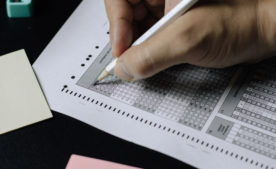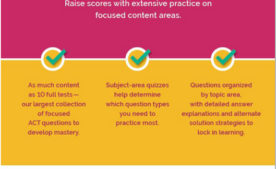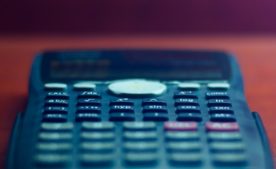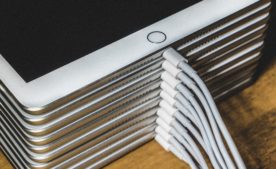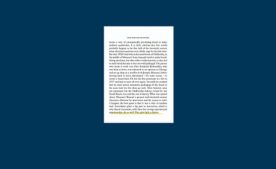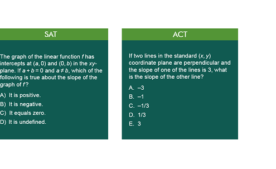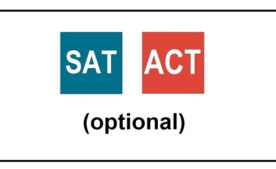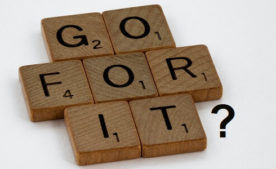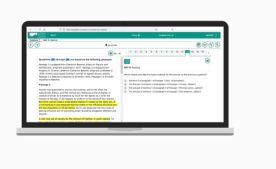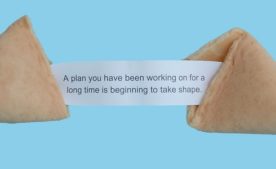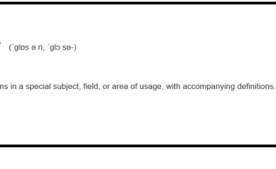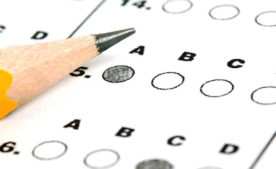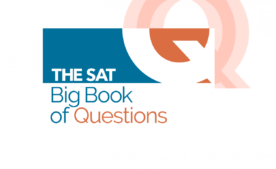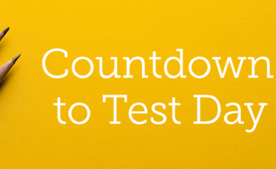You’ve been hard at work preparing for the paper SAT last fall and now you need to switch to the new Digital SAT test this spring. Switching tests can feel daunting. Luckily, there’s good news: while some question styles are new and the distribution of the questions is different, the SAT isn’t introducing lots of new concepts. This means you might have to learn a few new strategies for handling the new questions efficiently, but much of what you have been studying is still relevant!
Structurally, the Digital SAT has 4 modules. The first two are verbal (testing a mix of reading and writing skills) and the second two are math. The test is also section adaptive. This means that how well you do on the first module of each part will determine whether you get an easier or harder version of the second module.
Your goal, as it has always been, is to get as many questions correct as you can.
Step 1 (and the single most important thing you can do) to prepare for the switch to digital is to download the Bluebook app (the app College Board has created to deliver the new test) and take some time to get comfortable with the interface and the tools it provides. There are four full practice tests in the app.
One particularly useful tool is the answer eliminator. Clicking the icon that says “ABC” with a slash through it will turn on the tool, and, unless you turn it back off, you should only have to turn it on once per test.

Once it is on, there will be a small icon to the right of each answer choice that you can click to eliminate choices as you work through the question. The “Mark for Review” feature you can also see in the above screen snip is a great way to flag questions you want to come back to later.
Tips for the Verbal Section
Every reading question now has its own text, typically only a couple of sentences long. This means you need to focus on only one task at a time. The order of question types is consistent, so get familiar with the flow of questions. Roughly speaking, the test starts with vocab questions and then moves into reading comprehension, grammar, and finally rhetorical skills.
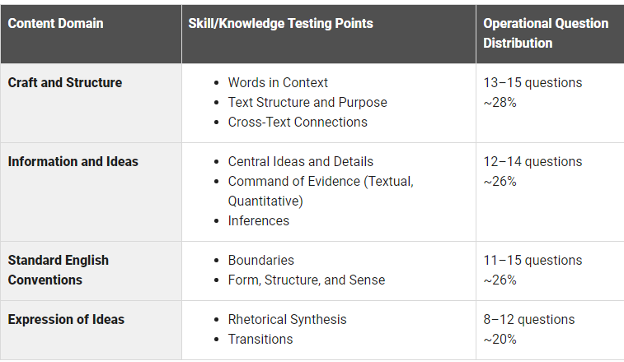
Vocabulary is a big part of the Digital SAT, but the words are ones you would likely see in college level reading and are not long-forgotten words from the dustbin of history. The range of text topics from the paper SAT has increased, so you’re likely to see poetry, plays, and prose on humanities, social science, history, and natural science. While the paper SAT focused on evidence, the Digital SAT focuses on claims and their logic, so pay attention to the transitions used to frame the topic.
Another big change is the reduction of grammar topics. While the paper SAT followed the ACT formula, the Digital SAT cuts out many topics of redundancy and diction, and instead focuses on punctuation, clauses, and verb tense.
Tips for the Math Section
In general the math sections should look very familiar. You will want to practice solving problems that are presented digitally and using your scratch paper effectively (there is no longer a natural space set aside for each problem!), but there are no new concepts to learn. There are a couple important differences to be aware of though.
Desmos
First, and most significantly, the Digital SAT allows you to use a calculator on both math sections. If you have a calculator that you know and love you are welcome (and we would encourage you) to bring it, but Bluebook also has a Desmos graphing calculator built into the math sections (accessed by clicking the calculator icon in the upper right corner of the screen).
Desmos is a game-changer on the new test. In particular, it can graph implicit equations (meaning you no longer have to solve for y before you can graph) and if you graph multiple equations it marks the intersection points for you (if it isn’t, try clicking on one of the lines). Check out this example! Even if you are comfortable with your own calculator, it is critical to master Desmos when preparing for the Digital SAT, as it radically simplifies the test if you know how to use it to streamline your approach to most questions.
The browser based Desmos calculator has a few minor differences from the Bluebook version, but they are obscure enough that you should feel comfortable practicing in the web based version.
Student Produced Responses
You probably recall that on the paper SAT the last few problems in each section were “grid-in” problems, where you had 4 spaces to fill with digits and potentially a period (.) or slash (/) to represent decimal or fractional numbers. These questions have been rebranded as “Student Produced Responses” (SPRs) and, while you should see a similar number of them, they are now scattered throughout the two math modules since the digital test isn’t constrained by the rigid format of the answer sheet. There are also a few key difference in what answers are allowed on SPRs:
- Answers can be negative! In the past getting a negative answer on one of these questions was a sign that something had gone wrong. That is no longer true.
- You now have 5 symbols to work with rather than 4 for positive numbers, with a sixth allowed if the answer is negative. This means that “25/36” is now a valid answer when it previously wouldn’t have fit and that if you want to code “1/7” as a decimal, it can be “.1428”, “.1429”, “0.142” or “.143” but NOT “0.14” or “.142” since you are still expected to use all of the available space if your decimal value has more digits than will fit.
You’re ready to make the switch!
In short, if you’re not done with testing and now need to make the switch from paper to digital, don’t fret! The list of things you have to do to be ready is limited and manageable. The best part is that you don’t have to go it alone. Our expert tutors are here to make the transition seamless if you’d like some extra support keeping your score on the right track. Call us or book a call with one of our Program Directors to get started. We are here to help.




